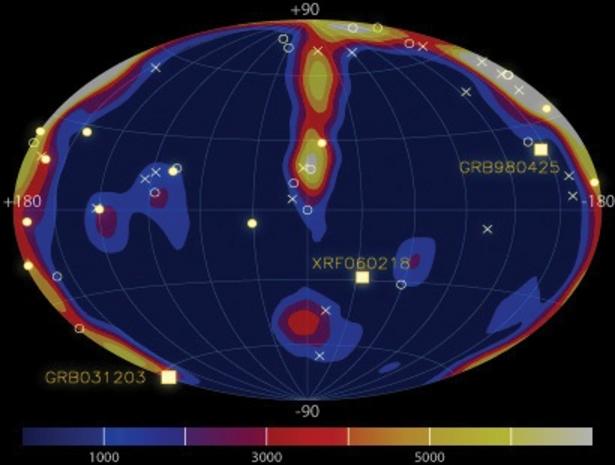
 Credit: S. Foley et al.; ESA
Credit: S. Foley et al.; ESA
How Low Can You Go?
Gamma Ray bursts are just about the most luminous class of objects (or events) we know about since the Big Bang. But they don't have to be the brightest, and in fact the faintest members of this class are extremely interesting, since they may reveal important clues about star death (and star formation) in the most distant corners of the Universe. These faint gamma-ray bursts perhaps can even tell us about how the first stars formed. Or they may be telling us about odd events that are going on in our local region of the Universe - strange exploding stars which are subluminous, or results of the merger of dead stars, or something perhaps even weirder. The IBIS instrument on the INTEGRAL Gamma-ray space observatory is a particularly good detector of faint gamma-ray bursts. The image above shows the amount of observing time IBIS has obtained for the entire Universe (in seconds as shown by the scale at the bottom), along with GRBs detected by IBIS. The filled-in circles show the faint bursts detected by IBIS. The IBIS observations suggest that these faint bursts are all nearby, perhaps hinting that some new, interesting physical process is occurring.
Published: November 24, 2008
<
HEA Dictionary ● Archive
● Search HEAPOW
● Other Languages
● HEAPOW on Facebook
● Download all Images
● Education ● HEAD
>
Each week the HEASARC
brings you new, exciting and beautiful images from X-ray and Gamma ray
astronomy. Check back each week and be sure to check out the HEAPOW archive!
Page Author: Dr. Michael F. Corcoran
Last modified Tuesday, 27-Feb-2024 10:15:13 EST


